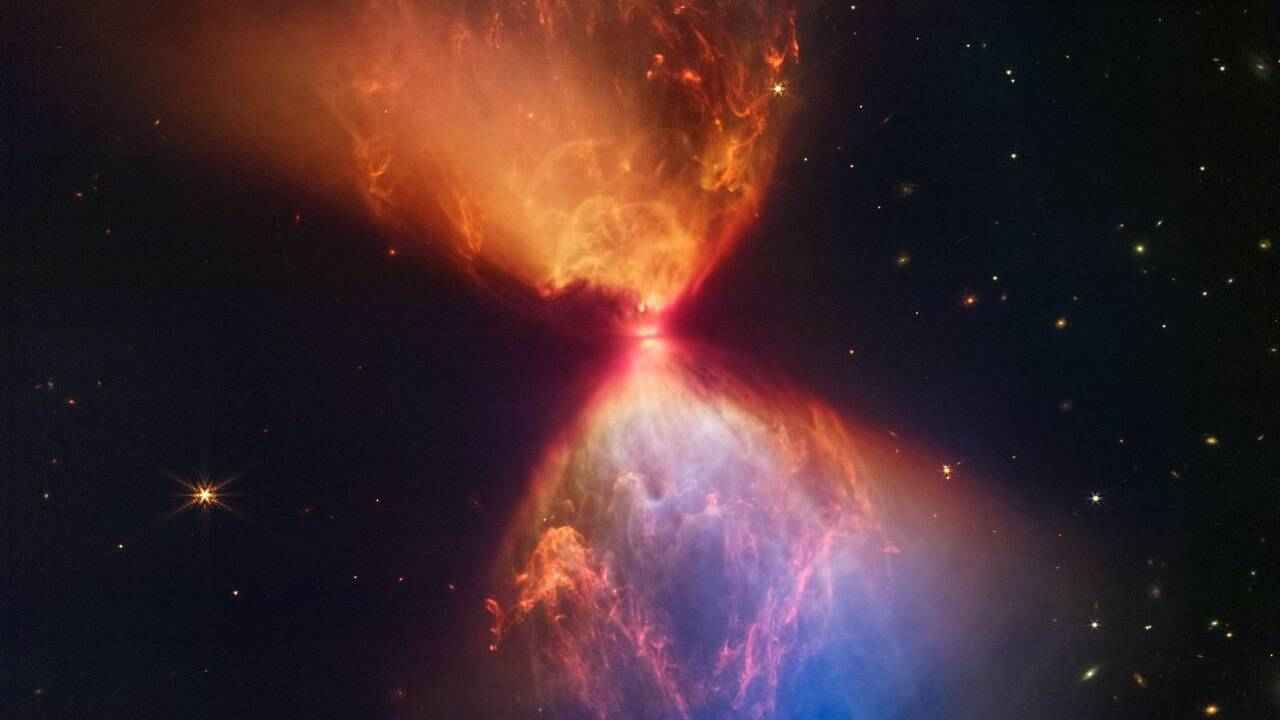NASA’s James Webb Telescope clicks image of a fiery hourglass in space

NASA’s JWT has revealed hidden features of a protostar
JWT had been deployed in December last year
The telescope’s images have become a talking point for many discussions in the science circles
NASA’s James Webb Telescope has been treating us with stunning visuals from space since its deployment in December 2021. In its latest treat, it has signalled back images of a fiery hourglass-like structure forming during the process of star formation. These new images, as per the experts at NASA, would provide new insights into the process of the formation of a new star.
The first pictures sent by the James Webb Telescope earlier this year had created a lot of hype in the science community, with NASA going as far as saying that “The dawn of a new era in astronomy has begun…” The images provided and continue to provide an unprecedented insight into sections of space that had not been photographed with such clarity ever before.
Just like poetry in motion
The images in focus right now, have revealed the features of the protostar hidden inside the neck of the hourglass-shaped dark cloud L1527. This feat was achieved by the telescope using its Near Infrared Camera (NIRCam). What worked in favour of the telescope when it attempted to click the pictures was the fact that the clouds in the “Taurus star-forming region” are only shown in infrared light.
The description of the image as given by the folks at the space agency would be like poetry to the ears of a science enthusiast – “The protostar itself is hidden from view within the ‘neck’ of this hourglass shape. An edge-on protoplanetary disc is seen as a dark line across the middle of the neck. Light from the protostar leaks above and below this disc, illuminating cavities within the surrounding gas and dust.”
As per NASA, these images will be instrumental in widening our understanding of the subject of planet formation. In their coverage of the pictures, the researchers gave an in-depth description of the significance of these images in their bid to get a much better understanding of the universe than what they have right now.
For more technology news, product reviews, sci-tech features and updates, keep reading Digit.in or head to our Google News page.
Satvik Pandey
Satvik Pandey, is a self-professed Steve Jobs (not Apple) fanboy, a science & tech writer, and a sports addict. At Digit, he works as a Deputy Features Editor, and manages the daily functioning of the magazine. He also reviews audio-products (speakers, headphones, soundbars, etc.), smartwatches, projectors, and everything else that he can get his hands on. A media and communications graduate, Satvik is also an avid shutterbug, and when he's not working or gaming, he can be found fiddling with any camera he can get his hands on and helping produce videos – which means he spends an awful amount of time in our studio. His game of choice is Counter-Strike, and he's still attempting to turn pro. He can talk your ear off about the game, and we'd strongly advise you to steer clear of the topic unless you too are a CS junkie. View Full Profile




